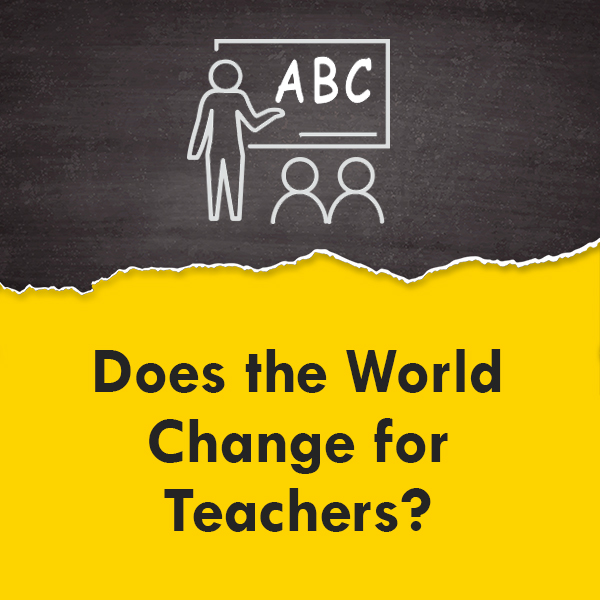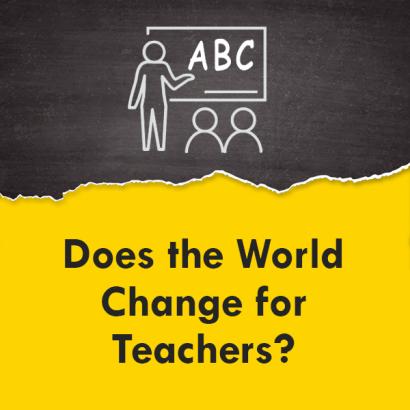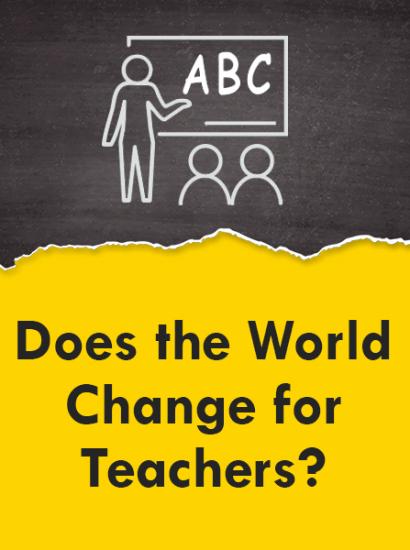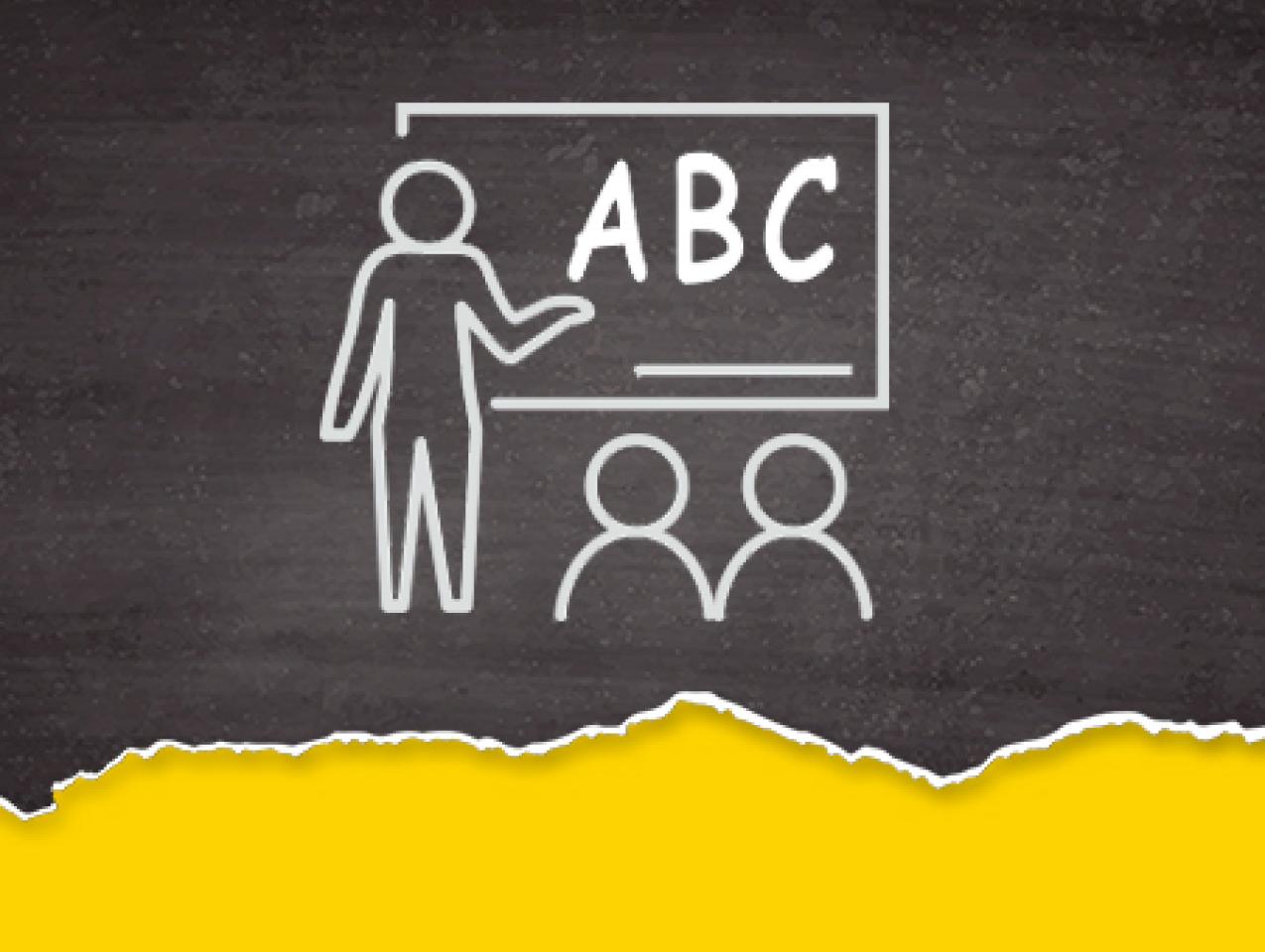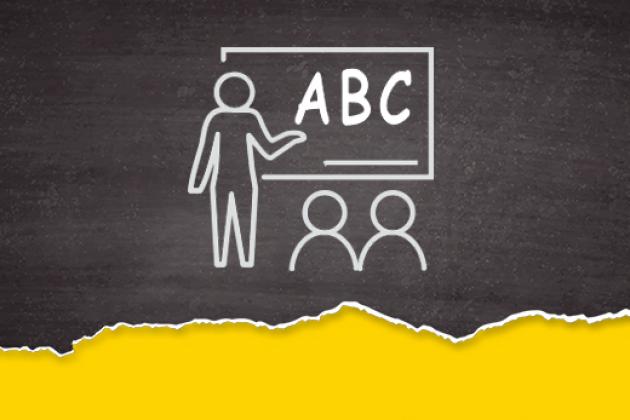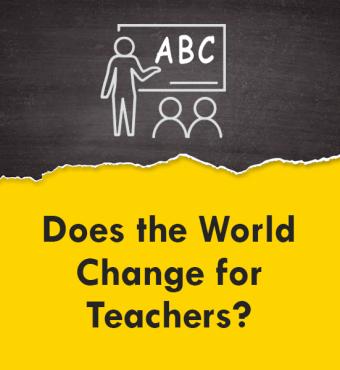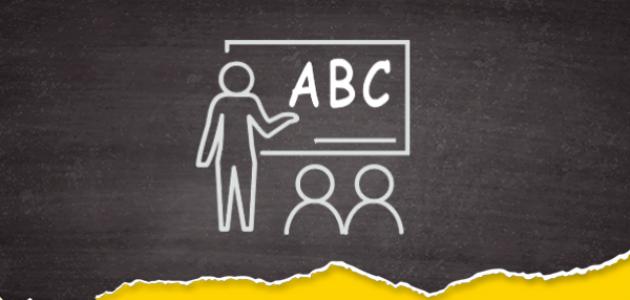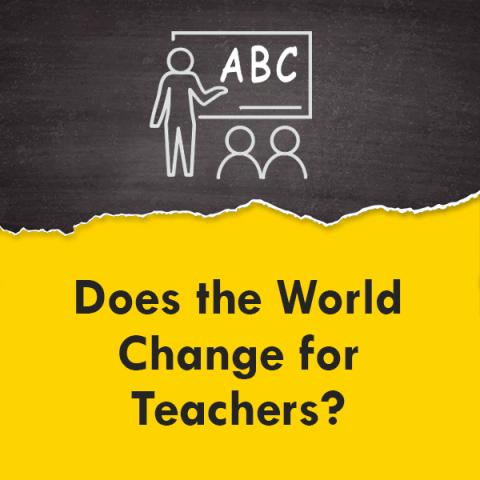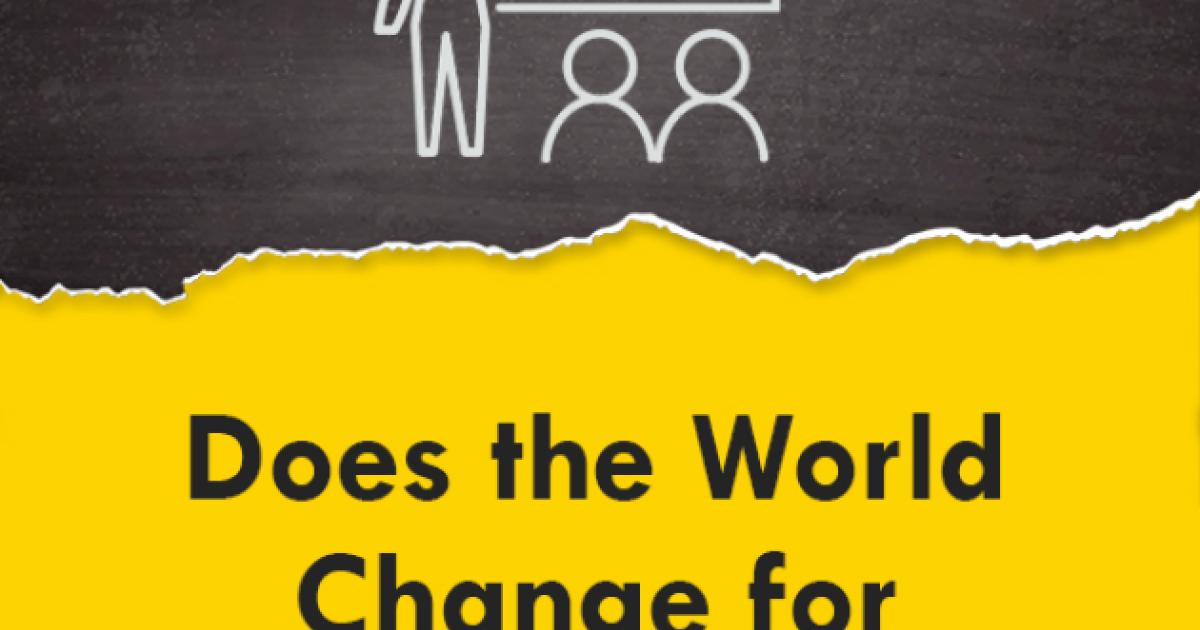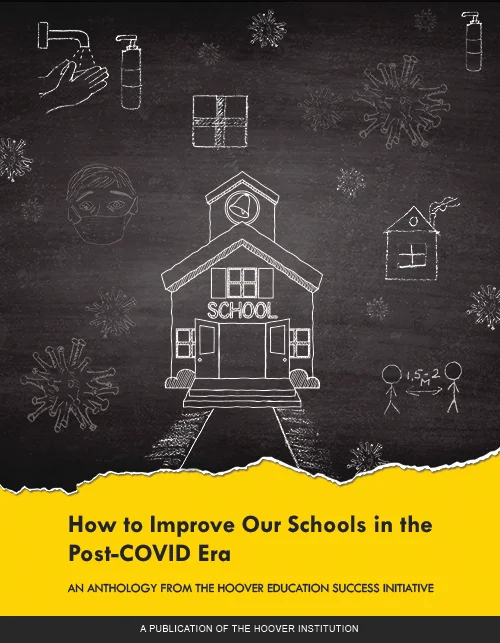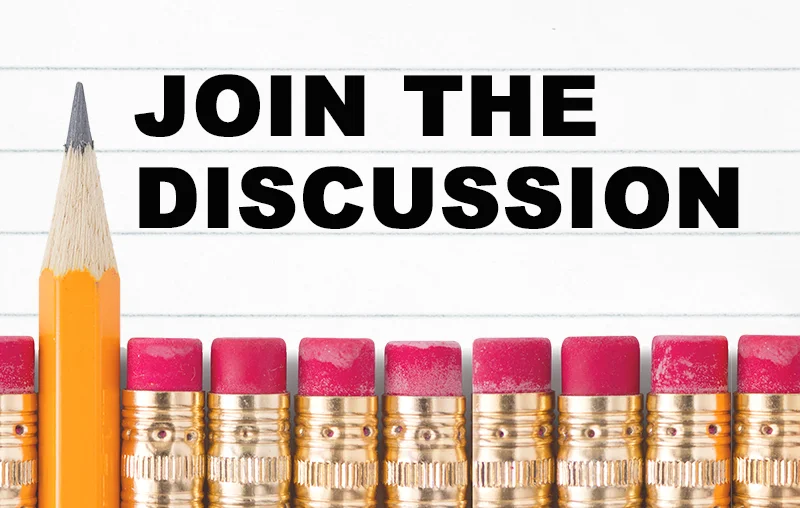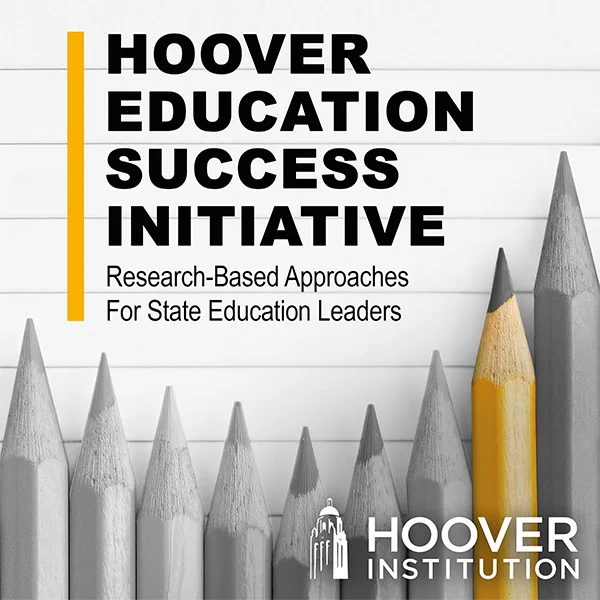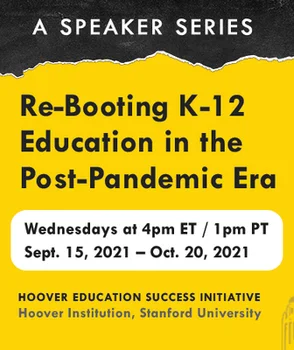- Reforming K-12 Education
Recommendations
- Support allocating teachers across instructional modes according to their effectiveness with in-class, remote, and mixed modes.
- Encourage specialization among educators; support flexing the traditional one-teacher-to-X-students policies and practices to encourage greater reach for exceptional instructors by mode and more specialized work for teachers with diagnostic expertise.
- Provide flexibility for using different assignments of students to fit the mode of instruction rather than sticking with the historical classroom–based decisions on such things as class size limits.
- Introduce incentive policies that provide extra compensation for teachers who are effective with disadvantaged students.
- Develop expanded evaluation instruments in order to identify the most effective teachers in different grades, subjects, and instructional modes.
The Impact of COVID-19
Schools changed dramatically with the COVID-19 pandemic, and it is unlikely that they will return fully to the “old normal.” Moreover, the learning losses for current students since March 2020 are likely to follow them over their lifetimes unless schools actually get better. The structure of teacher assignments and teacher compensation must change to accommodate these new realities. The teaching force must be used more effectively if the accrued challenges are to be met.
The initial reactions to the pandemic led to uniform school closures and a move to fully remote schools. As that happened, almost all students fell behind where they would have been had the 2019–20 school year continued in its historically typical manner. As schools faced a variety of challenges, the initial closures morphed into various mixtures of instructional modes and reopening strategies.
The impact of closures was not uniform. The varied preparation of different school districts had an effect. Remote learning became more dependent on technology, which proved difficult in many instances to harness and to optimize. And some families adjusted to and were able to support remote learning much better than others. All of these factors tended to exacerbate existing achievement gaps. The consequence is that going forward, educators will encounter an even broader range of knowledge and skills in their students and must be prepared to respond effectively to all students.
While reflection, evaluation, and planning occurred over summer 2020, the challenges obviously did not go away and are reappearing in summer 2021. Both parents and school personnel have been wary of any simple return to the prior classroom-based structure of schools. Large numbers of districts continue to struggle with the conflicting pressures. Differing opinions on safety matters, on the logistics of altered approaches, on the appropriateness of various technologies, and on the importance of in-class instruction continue to be present.
It seems unlikely that all of the major uncertainties will disappear as we enter the 2021–22 school year and beyond. It is now time to plan on new operations, not just a return to 2019.
The exact magnitude of learning loss is somewhat uncertain, because of the elimination of mandated student testing in spring 2020 and the slow restart of any testing. There is, nonetheless, no question that students on average have been materially harmed by the first year of adjustment to the pandemic.
Importantly, even if schools return to their 2019 levels of performance, students in affected cohorts will face on average 3–6 percent lower earnings over their lifetimes, and the nation will suffer commensurate lower productivity.1 Additionally, because the learning losses have been very uneven, students from disadvantaged families will be hit harder and future labor market gaps will grow.2
Even with more experience with a mixture of remote and in-person learning from the 2020–21 school year, there has been an effort in schools to retain as much as possible of the old structure of classroom-based school assignments for both students and teachers. Importantly, there has been a general presumption that, since it is all about well-defined learning topics, all teachers can and should switch between modes of instruction. Moreover—sometimes because there is no obvious alternative—teachers are called upon to simultaneously manage dual modes of instruction. But the overarching common theme is getting back to the historical organization and structures as quickly as possible.
What We Know
The pandemic has exacerbated many of the personnel problems that existed beforehand. It has also introduced new problems and challenges. At the same time, it is possible to build upon adjustments coming out of the pandemic to end up with a system that can make up for some or all of the learning losses suffered during the pandemic and set students in more promising directions.
Before the school closures and before the search for new approaches to instruction, there was overwhelming evidence of large differences in instructional effectiveness of teachers.3 The difference in student learning gains with a very effective teacher and a very ineffective teacher has been estimated at one full year of learning over the course of a single school year.4 Importantly, it has been clear that teacher effectiveness is not closely related to teacher degrees or teacher experience, the traditional determinants of salary differences.
The new modes of instruction have added an entirely new dimension of variation in teacher effectiveness to the mix. We do not currently have firm evidence on how much the variation in teacher effectiveness has increased, but it is safe to assume the expansion of instructional modes has increased—not decreased—the variation that existed before. A common observation is that the best teachers at in-class instruction are not necessarily the best at remote instruction, and vice versa. Yet planning and assignment policies too often take little notice of these differences. Instead, the general approach is to organize the schools and classrooms in the ways that existed in 2019 and before.
The demands on the schools have increased significantly as old routines have been thoroughly disrupted and as students increasingly fall off their learning paths. Building closures and the disrupted return to active schooling have rendered moot former lesson plans that will not meet students where they have landed academically.
The increase in variations in student preparation developed during the closures provides another disruption in schools. Anecdotal evidence suggests that some students have actually thrived under remote, more independent learning. The majority, however, have not kept pace as compared with 2019. Another group of students has not only stopped active learning but has fallen back.
On average, the learning losses have been large and disproportionately felt across the student population.5 Importantly, just returning to the schools of 2019 will leave this cohort of students permanently harmed, as the learning losses will follow them throughout their future schooling and careers.6[6]Planning after the closures of spring 2020 intensively focused on logistical issues such as general safety from the virus, availability of appropriate technology, configuration of the physical facilities, the amount of individual testing, and the like. In general, less attention was given to the actual learning demands that have built up—even as teachers are confronted with them.
One element of the move from closure to a new normal is an increased reliance on technology. Again, while much of the attention has gone to logistical issues—the availability of tablets, the coverage of broadband, the choice of software, etc.—less attention has been given to the best use of technology in different situations. There is both evidence and broad agreement that technology by itself is not a good substitute for teachers.7 Early test results from Ohio, for example, show that learning losses from all-remote classes were significantly larger than from those with either hybrid or in-class instruction.8 The teacher is an active component of learning, whether that learning occurs in class or remotely. Ensuring students have access to high-quality instruction needs to be modality neutral.
Moreover, the evidence suggests that simply providing teachers with current technology will by itself not increase the pace of learning. As noted above, some teachers will readily adapt to technologically enabled lessons, while others will not.
Making Schools Better
✏1 If the schools are to overcome the prior learning losses, they must get better than they were in 2019. The most obvious policy conclusion is that teachers need to be used better in order to reach higher performance levels. This may mean taking a variety of different actions, but the aim would be simple: use effective teachers more intensively in ways that match their skills.
Many of the decisions are ones of individual districts. The state can, however, provide both guidance in ways to deal with the challenges and incentives to seek improvements.
- ✏2 Teacher evaluations should be used first and foremost as a management tool. Differences in the effectiveness of teachers in different kinds of instruction should guide allocations. Support allocating teachers across instructional modes according to their effectiveness with in-class, remote, and mixed modes. Instead of maintaining historical assignment policies that placed teachers with students without regard to effectiveness, management decisions should consider directly how teacher skills interact with the demands of school learning. Ultimately, evaluations of the effectiveness of teachers regardless of mode should enter into personnel decisions about pay and placement, but discussion of these aspects should not prevent the immediate and regular use of teacher evaluations for management that focuses on the best use of teachers.
- Teachers have varying skills, but most assignments of teachers have them all fitting into a common mold. Particularly with the expansion of teachers’ jobs and interactions with their students, specialization of teachers should be encouraged. Instead of the uniform one-to-X classroom assignments, the most effective teachers in each mode of instruction should be encouraged to work to their strengths.
- ✏3 Current regulations, finance, and operating procedures are not fully compatible with new instructional demands and policies. Provide flexibility for use of different assignments of students to fit the mode of instruction rather than sticking with the historical classroom–based decisions on such things as class size limits. Various restrictions on managerial decisions developed in a past era need to be revamped so that teacher classroom assignments can adjust to a future world that will likely involve many more hybrid learning situations. For example, the most effective teacher at remote learning may exclusively do remote instruction for an expanded number of students even as there is also in-person instruction for the same students by other teachers. In such a situation, some teachers might also handle the noninstructional aspects of the students such as grading, administration, and the like, or the teacher with heavier demands may be directly compensated for the larger workload.
- The immediate widening of achievement gaps from the COVID-19 closures and the sluggish reopening of schools put even greater demands on the school system. While inequities have been a longstanding concern of our public schools, the external shock of the pandemic has made these inequities noticeably larger. Introduce incentive policies that provide extra compensation to teachers who are effective with disadvantaged students. School districts should be given incentives to identify more effective teachers and to use them in the schools where they are most needed. Such systems have been very effective in some states and provide a path to making the schools better for the disadvantaged students of today.
- ✏4 With new organizational forms for schools, the existing evaluation of teachers needs to be modified. This is complicated by missing data on student performance that has resulted first from closure and again from continued reluctance to test in “nonstandard” settings.9 Develop expanded evaluation instruments in order to identify the most effective teachers in different instructional modes. These evaluations, particularly initially, when disruption of both organization and testing is still present, should be thought of as providing information for assignments and for counseling of teachers—not for any punitive uses. There are also good examples of evaluation systems that do not rely on testing data when it is unavailable—but that still work.10
Making schools better—something that is required in order to erase the damage to this cohort of students—requires improving the overall effectiveness of the teacher corps. While this might be done by hiring different teachers, it is also possible to improve the average effectiveness of teachers by using the most effective teachers more intensively. Such a policy might have been used prior to the pandemic, but it becomes more crucial with the significant impacts of the pandemic on learning. This broader mandate may require an expansion of managerial decision making and perhaps different training of leaders.







